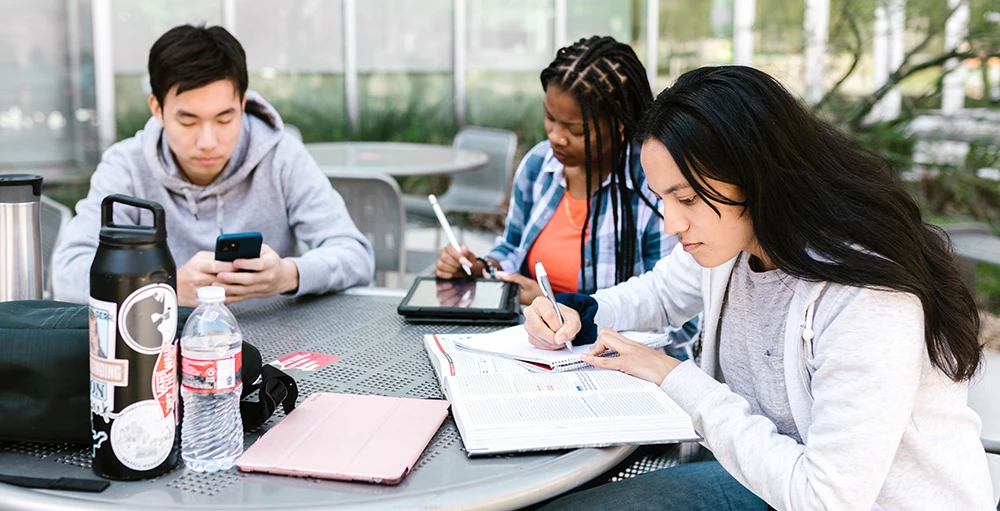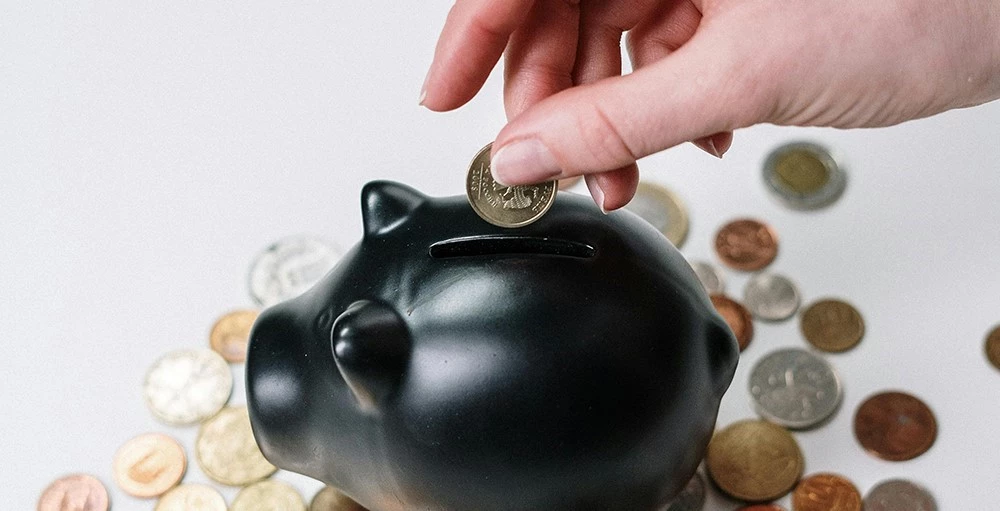Many colleges and universities offer financial counseling to students that focuses on tuition and loans. However, students need so much more.
The Hungry and Homeless College Reportz1 found that half of college students experience housing insecurity while one in five experience food insecurity. It’s not surprising then, that half of students worry about money and three in five worry about paying for college2.
Institutions of higher education can help their students by offering a strong financial wellness program that goes beyond financial aid. As the Financial Industry Regulatory Authority (FINRA) found3, college students who receive financial education:
- Save more money
- Incur less debt
- Make fewer compulsive purchases
- Pay their bills on time
- Increase their credit scores
Not only does this help students, but it also helps the schools they attend. Students participating in financial literacy programs have lower student loan defaults, higher grades, and are less likely to drop classes or drop out of school altogether.
Although any financial literacy program is better than no program at all, having the right tools at the right time is key for your students. Here are 5 ways to know that your student financial literacy program is not just good, but great.
1. It is Personalized
When it comes to financial literacy, one size doesn’t fit all. Your student population is unique, as is each student. What they need in terms of financial literacy will depend on many things, such as:
- Age when they began attending your institution
- Current grade level
- Family financial status
- Past financial education
- Need for financial aid
- Stage in life
- Future employment goals
Although a majority of students start school in their late teens to early 20s, many campuses also have a substantial number of nontraditional students.
These students may be working, raising a family, paying off debt, and worrying about retirement. Their needs will be different from the needs of an 18-year-old freshman who gets a monthly allowance from their parents. That’s why it is important to find a customizable financial literacy program for your students.
Personalization also means having information available to students when they want to find it.
A study in the College and Research Libraries Journal4, found that most students search for information about financial literacy due to the need for more money and a fear of being poor. This was often expressed by a fear of the consequences of poor money management.
Students also looked for information when they were focusing on the future, concerned about getting credit, or wanting to know how to pay off loans, especially student loans.
Generally speaking, students only look for financial information when they need it. This means that a great financial literacy program should be available to students all day, every day, and compatible with all major electronic devices.
2. Create Action Steps
Students who actively look for financial information often already have a financial problem that needs solving.
Perhaps they have continued to run out of money before the end of the month. Or maybe they don’t know how to create an emergency savings account. Or they may have trouble filling out the forms needed for financial aid.
Imagine that a student with a problem participates in your financial literacy program and gets some great information about budgeting, savings, or financial aid, but leaves with no game plan – and no idea how to create one. That means that the following month, the student will still run out of money, still won’t have any savings, or will still be struggling with financial aid forms.
If this occurs, then your financial literacy program failed.
To have a great financial wellness program, students will interact with the material in a way to meet their needs. It starts with an assessment of the student’s current knowledge, personality, and issues. Then it will provide information and actionable steps to help students reach their goals.
3. Quality Content Counts
A recent survey5 found that one in four Gen Z Americans get their financial advice from social media including YouTube (63%) and TikTok (56%).
The study also found that three out of five people who get their information from social media have acted on that advice. Unfortunately, the advice found on social media may or may not be accurate.
That’s why a great financial literacy program needs to provide information that is:
- Unbiased – is not sponsored by a student loan lending institution or a credit card company catering to students
- Reliable – is sourced from experts rather than hearsay or questionable sites
- Quality – will help students in all areas of financial wellness
A great student financial literacy course will help students through the economic challenges of today and prepare them for their financial future. Doing so will help them obtain financial wellness.
Because students are more likely to look for advice from social media-type sources, a great financial literacy program also needs to provide information in a way that meets student expectations. This means that in addition to courses and articles, the program should offer:
- Calculators
- Tools
- Videos
- Assessments
- Games
4. A Holistic Approach
Too many financial literacy programs focus only on financial education without understanding how financial health affects a student’s emotional health, physical health, and spirituality.
A great financial literacy program will help students see this connection and will work to include all areas of the student’s life.
iGrad offers a holistic approach to financial literacy, combining strategies and practices that:
- Teach basic concepts
- Show how financial wellness affects all aspects of life
- Provide students with the skills needed to make sound financial decisions
- Offer an improvement in all aspects of their life
5. Respond to Feedback
Student financial literacy should not be static. Instead, the program should change based on the opinions, needs, and ideas of the students.
If you learn, for example, that your students are concerned about identity theft, then a great financial literacy program will have the ability to incorporate that need.
Remember, the goal when providing financial literacy to students is to help them understand personal finances and gain financial security now and in the future. That is why asking for and listening to their feedback is key to developing the best program possible.
To learn more about iGrad and how it can help you develop a great financial literacy program for your students, take a look at our comprehensive roadmap of best practices for a successful, system-wide financial literacy initiative.
1 - https://hope4college.com/wp-content/uploads/2018/09/Hungry-and-Homeless-in-College-Report.pdf
2 - https://news.osu.edu/70-percent-of-college-students-stressed-about-finances/
3 - https://www.finrafoundation.org
4 - https://crl.acrl.org/index.php/crl/article/view/24835/32672
5 - https://www.napfa.org/social-media-survey








